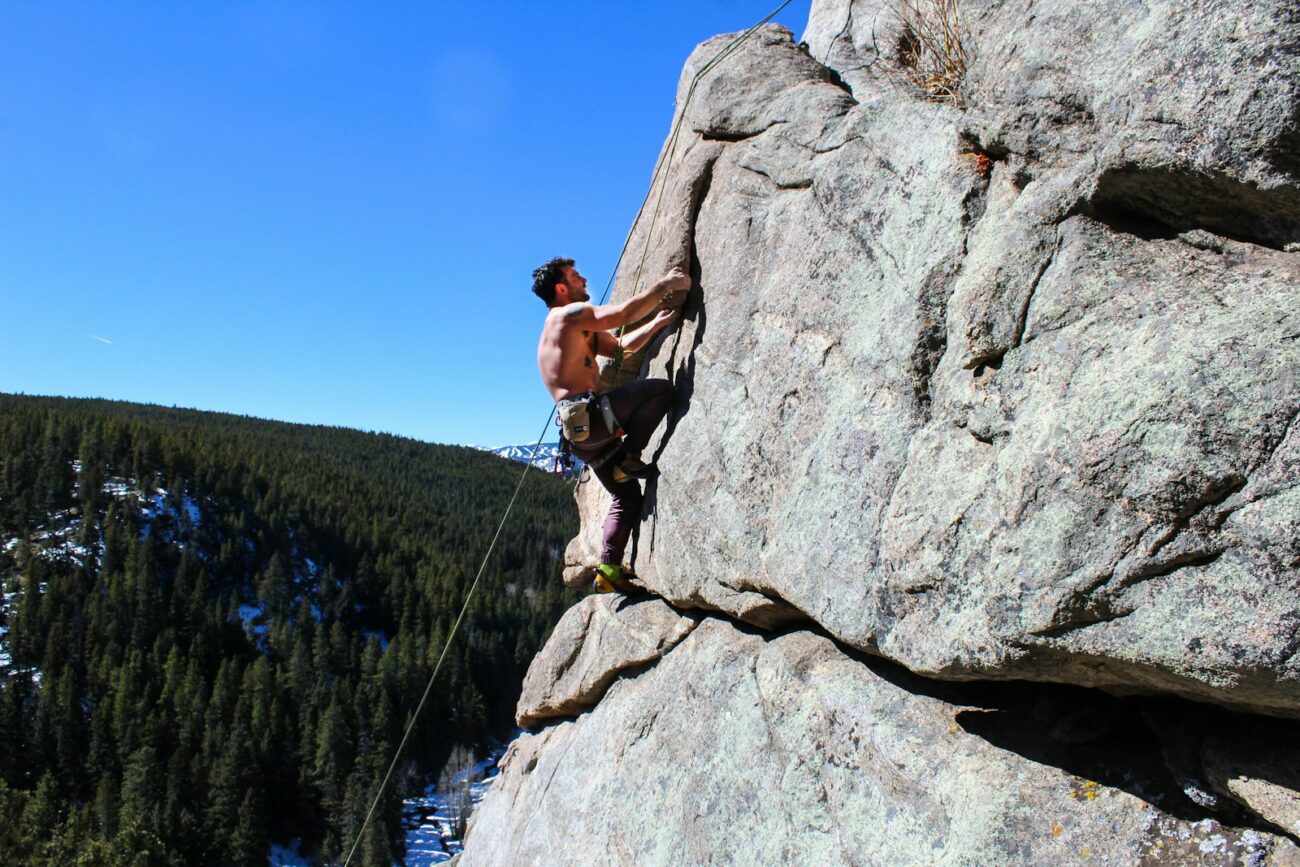Rock climbing offers an exhilarating blend of physical challenge and mental focus that has attracted countless enthusiasts to its vertical world. However, for newcomers to the sport, the combination of height, technical skills, and equipment can seem overwhelming—even intimidating. Safety isn’t just a recommendation in climbing; it’s the foundation upon which every successful climbing career is built. Whether you’re headed to an indoor gym for your first bouldering session or planning to scale outdoor crags, understanding fundamental safety practices will not only protect you from injury but also enhance your enjoyment of this rewarding activity. This guide offers twelve essential safety tips designed specifically for those taking their first steps into the climbing community, ensuring you start your journey with confidence and competence.
Choose the Right Environment for Learning

For your initial climbing experiences, an indoor climbing gym provides the most controlled and supportive environment to develop fundamental skills. These facilities offer professionally set routes with clearly marked difficulty levels, allowing beginners to progress methodically while minimizing risk. Indoor gyms also provide padded flooring, reducing the consequences of falls that inevitably occur during the learning process. Most importantly, climbing gyms typically employ experienced staff who can offer guidance on proper technique, equipment use, and safety protocols specific to their facility. Beginning your climbing journey in such a structured setting allows you to focus on movement and technique before introducing the additional variables and challenges of outdoor climbing.
Find a Qualified Mentor or Take Lessons

Self-teaching climbing techniques from videos or books leaves significant gaps in practical knowledge that can lead to dangerous mistakes. Investing in proper instruction from a certified climbing instructor or experienced mentor provides personalized feedback that addresses your specific learning style and physical capabilities. Professional instructors are trained to identify and correct subtle but critical errors in technique that might otherwise become ingrained habits. Beyond technical skills, mentors can impart the cultural etiquette and environmental ethics of the climbing community. This knowledge transfer creates a foundation of respect for both the sport and its environments that will serve you throughout your climbing career.
Master Proper Belaying Techniques

Belaying—the process of managing the rope to protect a climber from falling—represents one of the most crucial safety skills in roped climbing scenarios. This technique requires complete attention, proper body positioning, and consistent hand placement to effectively catch falls and lower climbers safely. Before attempting to belay someone, ensure you’ve received hands-on instruction and supervised practice from a qualified instructor. Most climbing gyms require belayers to pass a certification test before allowing independent belaying. Remember that when you belay, you literally hold your partner’s life in your hands, making this skill non-negotiable for anyone serious about climbing safety. Regular practice under various conditions helps develop the muscle memory and judgment needed for instinctive, reliable belaying responses.
Learn the Art of Falling Safely

Falling represents an inevitable aspect of climbing that requires specific techniques to minimize injury risk. For bouldering (climbing without ropes at lower heights over crash pads), practice controlled falls where you land with bent knees, allow your body to roll backward, and distribute impact across a larger surface area. When roped climbing, resist the instinct to grab the wall during a fall, as this increases the risk of finger or arm injuries. Instead, focus on maintaining a slight bend in your knees and keeping your body slightly away from the wall to avoid scrapes and impacts. Developing proper falling technique builds confidence that allows you to push your climbing limits without hesitation due to fear. Regular practice falls in controlled environments help build the muscle memory needed for instinctive safe responses during unexpected falls.
Invest in Properly Fitted Equipment

Climbing equipment functions as a life-supporting system, making proper fit and condition non-negotiable factors for safety. When purchasing or renting your first harness, ensure it fits snugly around your waist and thighs without restricting movement or causing discomfort. Climbing shoes should fit precisely—typically tighter than street shoes—but shouldn’t cause painful pressure points that distract from climbing movements. Helmets must sit level on your head without excessive movement, covering your forehead while allowing peripheral vision. Rather than purchasing used safety equipment with unknown history, invest in new gear from reputable manufacturers for critical components like harnesses, carabiners, and ropes. Remember that properly fitted equipment not only enhances safety but also improves performance by allowing you to focus on climbing rather than gear adjustments.
Develop a Pre-Climb Safety Routine

Establishing a consistent safety check routine before each climb creates a reliable system that catches potential oversights regardless of distractions or excitement. This routine should include checking that your harness is double-backed (if applicable), your tie-in knot is correctly finished with adequate tail, carabiners are locked, and your belay device is properly threaded and secured. Many experienced climbers use the “partner check” system where climbers verbally and visually confirm each other’s setup before leaving the ground. Implementing the climbing gym standard call-and-response system—”On belay?” “Belay on!” “Climbing?” “Climb on!”—further ensures clear communication and readiness. Adhering to this systematic approach for every climb, regardless of perceived difficulty or familiarity, prevents the complacency that often precedes accidents.
Understand Route Ratings and Choose Appropriately

Climbing routes are graded according to difficulty using systems that vary by country and climbing discipline, providing crucial information for selecting appropriate challenges. In the United States, the Yosemite Decimal System (5.0 to 5.15) rates technical rock climbs, while the V-scale (V0 to V17) applies to bouldering problems. As a beginner, focus on routes well within your physical and technical capabilities—typically 5.5-5.8 for roped climbing or V0-V1 for bouldering—allowing you to develop proper technique and confidence before advancing. Remember that ratings often vary between climbing areas and gyms, so approach each new location with humility regarding your abilities. Gradually increasing difficulty as your skills develop prevents the dangerous situation of becoming “stuck” on a route beyond your current capability, which can lead to fatigue, poor decision-making, and increased injury risk.
Stay Hydrated and Properly Fueled

Climbing demands significant physical exertion that quickly depletes energy reserves and fluids, making proper nutrition and hydration essential safety components. Before climbing sessions, consume balanced meals containing complex carbohydrates and protein to provide sustained energy without digestive discomfort. During climbing, keep water easily accessible and sip regularly rather than waiting until thirst develops, as dehydration impairs both physical performance and decision-making abilities. Pack easily digestible snacks like fruit, nuts, or energy bars for longer climbing sessions to maintain blood sugar levels and muscle function. Remember that mental fatigue often precedes physical exhaustion in climbing, making nutrition a crucial factor in maintaining the focus required for safe movement and equipment management.
Practice Effective Communication

Clear communication between climbing partners prevents misunderstandings that can lead to serious accidents, particularly in noisy environments like crowded gyms or windy outdoor settings. Establish and consistently use standardized climbing calls that indicate specific actions: “Take” (tighten the rope), “Slack” (provide more rope), “Falling” (prepare to catch), and “Lowering” (begin controlled descent). When climbing outdoors or in busy gyms where verbal communication may be challenging, develop alternative signals such as rope tugs or visual gestures that convey essential information. Before starting climbs with new partners, briefly discuss any personal communication preferences or variations to ensure mutual understanding. Effective communication extends beyond technical commands to include honest discussions about comfort levels, fears, and physical limitations that might affect climbing safety.
Recognize the Signs of Fatigue

Fatigue dramatically increases injury risk in climbing by compromising both physical capabilities and mental judgment. Learn to identify your personal fatigue indicators, which might include deteriorating technique, excessive shaking in limbs, difficulty maintaining grip, or waning concentration during safety checks. The forearm pump—an intense burning sensation coupled with reduced grip strength—signals that your muscles have accumulated lactic acid and require recovery time. When you notice these warning signs, take appropriate breaks rather than pushing through fatigue that might lead to dangerous falls or technical errors. Many climbing injuries occur during “just one more climb” attempts when fatigue has already compromised performance. Developing this self-awareness protects not only yourself but also your climbing partners who depend on your alertness for their safety.
Respect Weather and Environmental Conditions

For outdoor climbing, weather conditions significantly impact safety margins and require careful assessment before and during climbing activities. Moisture from rain, dew, or humidity can transform secure rock holds into dangerously slippery surfaces, while excessive heat may cause problematic sweating and reduced friction. Strong winds create communication difficulties between climbers and belayers while potentially affecting balance on exposed routes. Develop the habit of checking detailed weather forecasts specifically for your climbing area, recognizing that conditions often differ dramatically between valley floors and elevated climbing locations. Learn to identify warning signs of approaching storms, including darkening clouds, sudden temperature changes, or distant thunder, which should trigger immediate descent plans. Respecting these environmental factors demonstrates both climbing wisdom and appreciation for the natural settings that make outdoor climbing so rewarding.
Embrace a Progressive Learning Approach

Sustainable climbing development follows a gradual progression that builds skills systematically rather than attempting ambitious objectives prematurely. Begin with thoroughly mastering fundamental movements and safety techniques before introducing more complex scenarios or challenging environments. Each climbing discipline—bouldering, top-roping, lead climbing, and multi-pitch routes—represents a distinct progression requiring specific skills and experience. Resist the temptation to skip developmental stages even when physically capable of more difficult climbs, as technical proficiency and safety awareness often lag behind raw strength. Set realistic intermediate goals that stretch your abilities while remaining achievable, celebrating these milestones rather than constantly comparing yourself to more experienced climbers. This measured approach not only reduces injury risk but also builds the comprehensive skill foundation that supports a lifetime of safe climbing adventures.
Climbing combines physical challenge, problem-solving, and community connection in a uniquely rewarding activity that can become a lifelong passion. By implementing these twelve safety fundamentals from the beginning of your climbing journey, you establish habits that protect both yourself and those around you while maximizing enjoyment of the sport. Remember that even the most experienced climbers maintain vigilant safety practices—not as limitations, but as the framework that enables their boldest achievements. Approach each climb with respect for the inherent risks, commitment to proper technique, and awareness of your current capabilities. With these foundations in place, you’re well-positioned to explore the vertical world safely while experiencing the profound satisfaction that draws people to climbing’s challenges and communities worldwide.

